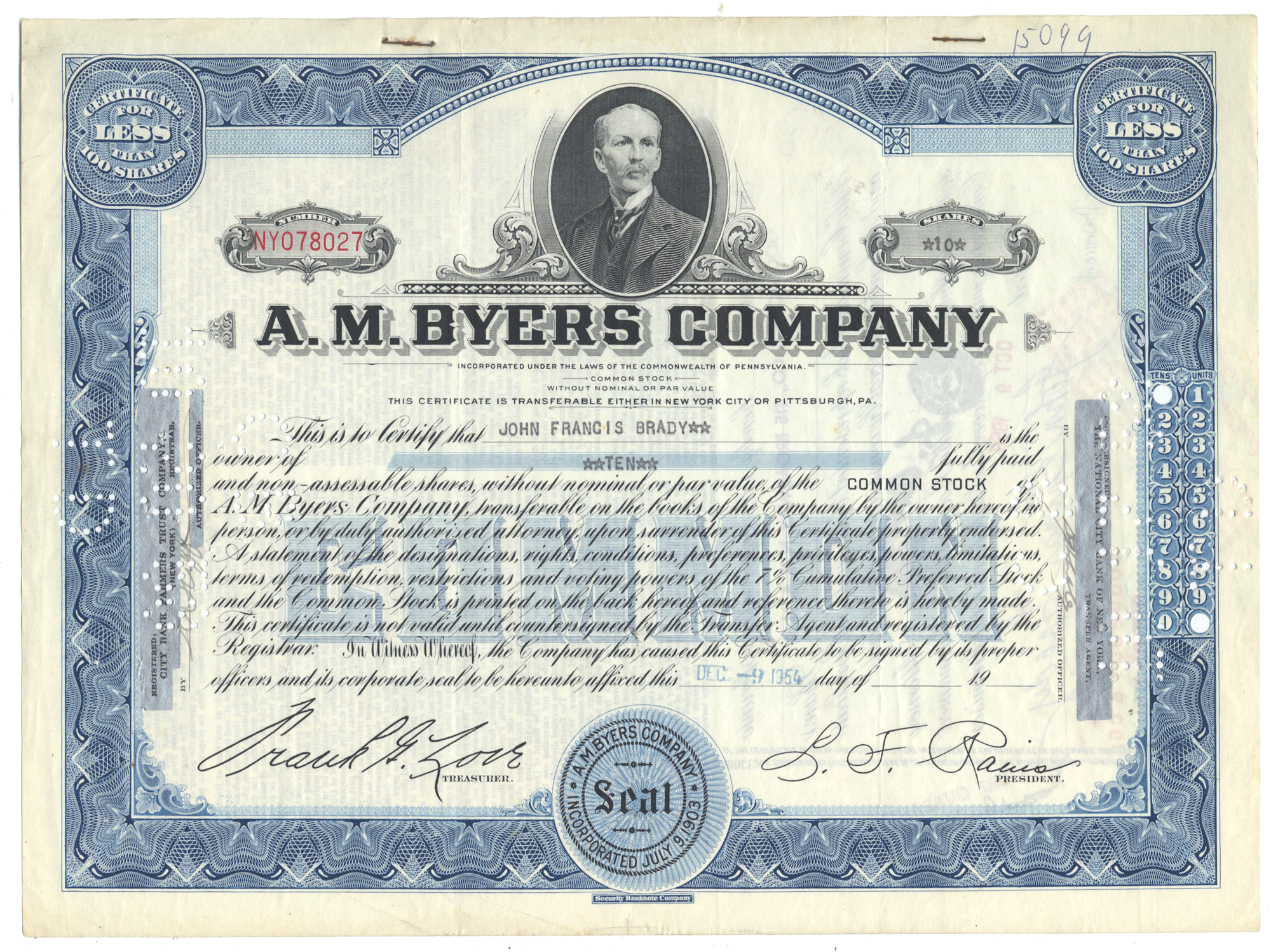
Atari Corporation
- Guaranteed authentic document
- Orders over $75 ship FREE to U. S. addresses
Product Details




Certificate Type
Common Stock
Date Issued
July 21, 1989
Canceled
Yes
Printer
Security-Columbian/United States Bank Note Company
Signatures
Machine printed
Approximate Size
12" (w) by 8" (h)
Additional Details
NA
Historical Context

In 1971, Nolan Bushnell and Ted Dabney founded an engineering firm, Syzygy Engineering, that designed and built Computer Space, the world's first arcade video game, for Nutting Associates. On June 27, 1972, Atari, Inc. was incorporated and soon hired Al Alcorn as their first design engineer. Bushnell decided to have Alcorn produce as a test of his abilities, an arcade version of the Magnavox Odyssey's Tennis game, which would be named Pong. While Bushnell incorporated Atari in June 1972, Syzygy Company was never formally incorporated. Before Atari's official incorporation, Bushnell wrote down several words from the game go, eventually choosing atari, a term which in the context of the game means a state where a stone or group of stones is imminently in danger of being taken by one's opponent. Atari was incorporated in the state of California on June 27, 1972.
In 1973, Atari secretly spawned a "competitor" called Kee Games, headed by Nolan's next door neighbor Joe Keenan, to circumvent pinball distributors' insistence on exclusive distribution deals; both Atari and Kee could market virtually the same game to different distributors, with each getting an "exclusive" deal. Though Kee's relationship to Atari was invented in 1974, Joe Keenan's management of the subsidiary led to him being promoted president of Atari that same year.
In 1976, Bushnell, through a Grass Valley, CA. engineering firm—Cyan Engineering, started an effort to produce a flexible video game console that was capable of playing all four of Atari's then-current games. The result was the Atari Video Computer System, or "VCS" (Later renamed the Atari 2600 when the Atari 5200 was released). The initial release of the VCS cost $199 (equivalent to $829 in 2015) and included a console unit, two joysticks, a single pair of paddles, and the Combat cartridge. Bushnell knew he had another potential hit on his hands, but bringing the machine to market would be extremely expensive. Looking for outside investors, in 1976 Bushnell sold Atari to Warner Communications for an estimated $28–32 million, using part of the money to buy the Folgers Mansion. Nolan continued to have disagreements with Warner Management over the direction of the company, the discontinuing of the Pinball division and most importantly, he felt that the Atari 2600 should be discontinued. In 1978, the Kee Games brand was dropped. In December of that year during a heated argument between Nolan Bushnell and Manny Gerard, Bushnell was fired. "[W]e started fighting like cats and dogs. And then the wheels came off that fall. Warner claimed they fired me," recalled Bushnell. "I say I quit. It was a mutual separation."
A project to design a successor to the 2600 started as soon as the system shipped. The original development team estimated the 2600 had a lifespan of about three years, and decided to build the most powerful machine they could, given that time frame. Mid-way into the effort's time-frame, the home computer revolution was taking off, so the new machines were adapted, with the addition of a keyboard and various inputs, to produce the Atari 800, and its smaller cousin, the 400. Although a variety of issues made them less attractive than the Apple II for some users, the new machines had some success when they finally became available in quantity in 1980. In 1982, the Atari 5200 was released, based heavily on the 400 and 800 models, but without a keyboard. The 5200 was unsuccessful, due to a lack of backwards compatibility with the 2600 library, a small amount of games, and notoriously-unreliable controllers.
Under Warner and the Chairman and CEO they chose to run Atari, Raymond Kassar, Atari Inc. achieved its greatest success, selling millions of 2600s and computers. At its peak, Atari accounted for a third of Warner's annual income and was the fastest-growing company in the history of the United States at the time. However, Atari Inc. ran into problems in the early 1980s as interference from the New York-based Warner management increasingly affected daily operations. Its home computer, video game console, and arcade divisions operated independently of one another and rarely cooperated. Faced with fierce competition and price wars in the game console and home computer markets, Atari was never able to duplicate the success of the 2600.
These problems were followed by the video game crash of 1983, with losses that totaled more than $500 million. Warner's stock price slid from $60 to $20, and the company began searching for a buyer for its troubled division. In 1983, Ray Kassar was forced to resign, and executives involved in the Famicom lost track of the negotiations, and the deal eventually died. With Atari's further financial problems and the Famicom's runaway success in Japan after its July 16, 1983 release date, Nintendo decided to go at it alone.
Financial problems continued to mount and Kassar's successor, James J. Morgan, had less than a year in which to tackle the company's problems, he began a massive restructuring of the company and worked with Warner Communications in May 1984 to create "NATCO" which stood for New Atari Company which would further lean the company facilities, personnel and spending and make the company profit. Unknown to James Morgan and the senior management of Atari, Warner had been in talks with Tramel Technology to buy Atari's Consumer electronics and Home Computer divisions. Negotiating up until close to midnight of July 1, 1984 Jack Tramiel purchased Atari. Warner sold the home computing and game console divisions of Atari to Tramiel for $50 cash and $240 million in promissory notes and stocks, giving Warner a 20% stake in Atari Corporation who then used it to create a new company under the name Atari Corporation. Warner retained the arcade division, continuing it under the name Atari Games, but sold it to Namco in 1985. Warner also sold the fledgling Ataritel to Mitsubishi.
Related Collections
Additional Information
Certificates carry no value on any of today's financial indexes and no transfer of ownership is implied. All items offered are collectible in nature only. So, you can frame them, but you can't cash them in!
All of our pieces are original - we do not sell reproductions. If you ever find out that one of our pieces is not authentic, you may return it for a full refund of the purchase price and any associated shipping charges.





